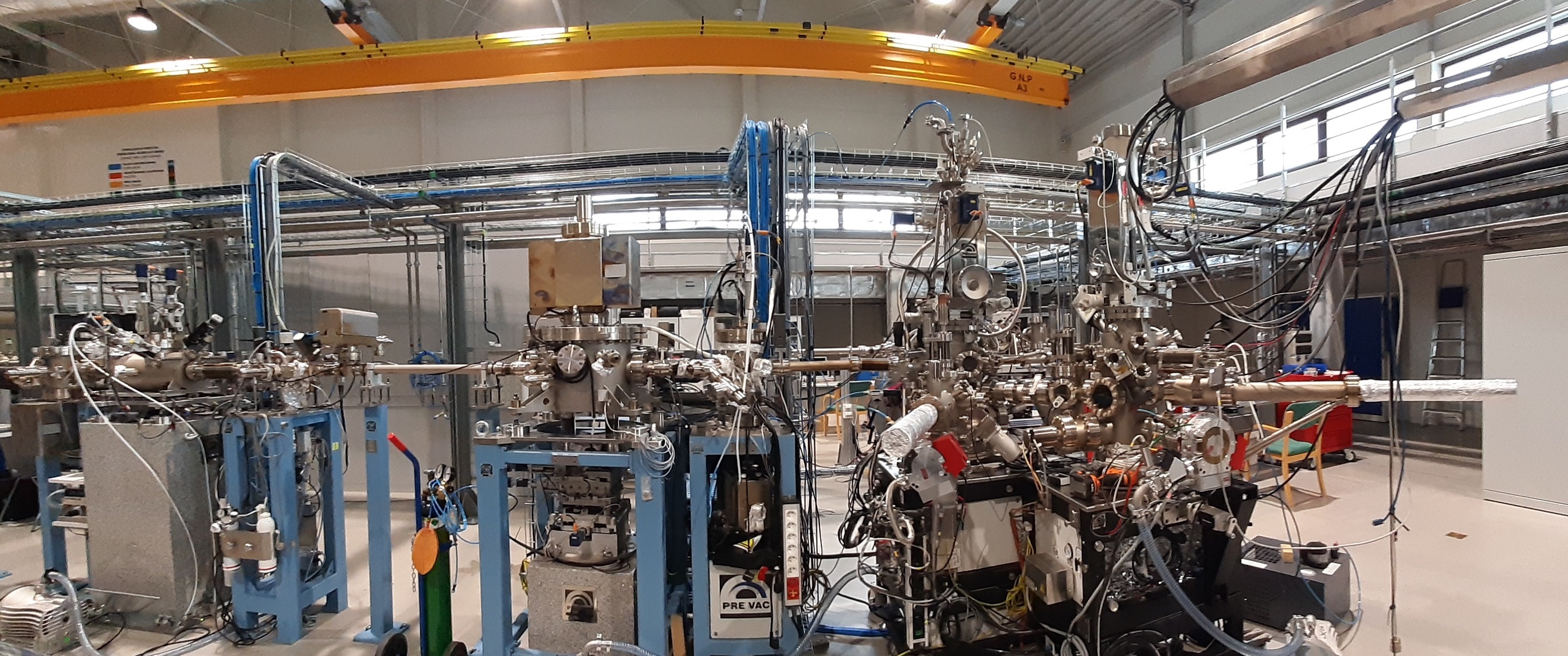The PIRX (Premiere InstRument for Xas) – former PEEM/XAS – is a bending magnet based beamline dedicated to spectroscopy in the soft X-ray energy range. It is suitable for probing element specific properties of surfaces, interfaces, thin films and nanomaterials.
The beamline is designed to study chemical and electronic, structural and magnetic properties by means of X-ray absorption spectroscopy (XAS), X-ray natural linear dichroism (XNLD) and X-ray magnetic circular dichroism (XMCD), X-ray magnetic linear dichroism (XMLD), respectively. The available photon energy range (100–2000 eV) covers the absorption K edges for light elements, from beryllium to silicon, L edges of elements with Z between 15 and 38, including 3d elements, and also M edges of many heavier atoms, including 4f elements.
The offered experimental station is a universal station for X-ray absorption spectroscopy.
The end station is available for user’s experiments in different sample environments and focusing conditions. When preparing experiment, users are kindly asked to read the information on the website about the experimental station.
Applications
The PIRX beamline can be used in material sciences, physics, chemistry, geosciences and biosciences.
Please do not hesitate to contact the beamline team to discuss if your experiments are technically feasible before submission of the proposal application.
The beamline is co-operated by the Jagiellonian University, the Jerzy Haber Institute of Catalysis and Surface Chemistry of the Polish Academy of Sciences (ICSC PAS), and the AGH University of Science and Technology in Kraków. The relevant agreement was signed on March 2, 2016 (event nformation).
The Jerzy Haber Institute and AGH invite users who have been granted beam time to cooperate:
- an offer of the Jerzy Haber Institute of Catalysis and Surface Chemistry includes carrying out complementary measurements with the Institute's research infrastructure, including LEEM microscope.
- the AGH University of Science and Technology offers a possibility to perform complementary measurements in the laboratories of the Academic Centre for Materials and Nanotechnology, e.g., of resistivity, magnetoresistivity and specific heat at low temperatures (50 mK – 30 K) and at high magnetic fields (up to 14 T) and in the laboratory of the Group of Surface Nanostructures, Faculty of Physics and Applied Computer Science, e.g., of magnetic hysteresis loops by means of magnetooptical Kerr effect.
Beamline parameters:
| Parameters | Value |
|---|---|
|
Source |
Bending magnet (1.31 T) |
|
Available (optimal) energy range |
100–2000 eV (300–1600 eV) |
|
Energy resolution ΔE/E |
Not worse than 2.5 x 10-4 |
|
Beam size at sample (H x V) |
Focused: 250 µm x 40 µm |
|
Photon flux at sample |
109-1010 [ph/s/0.1 A] |
|
Polarization |
Linear (horizontal) and elliptical |
|
End station PIRX-UHV Soft XAS |
Available: XAS, XNLD, XMCD and XMLD in external magnetic field (140 mT) and variable sample temperature (20-670 K).
During implementation (not available): |


